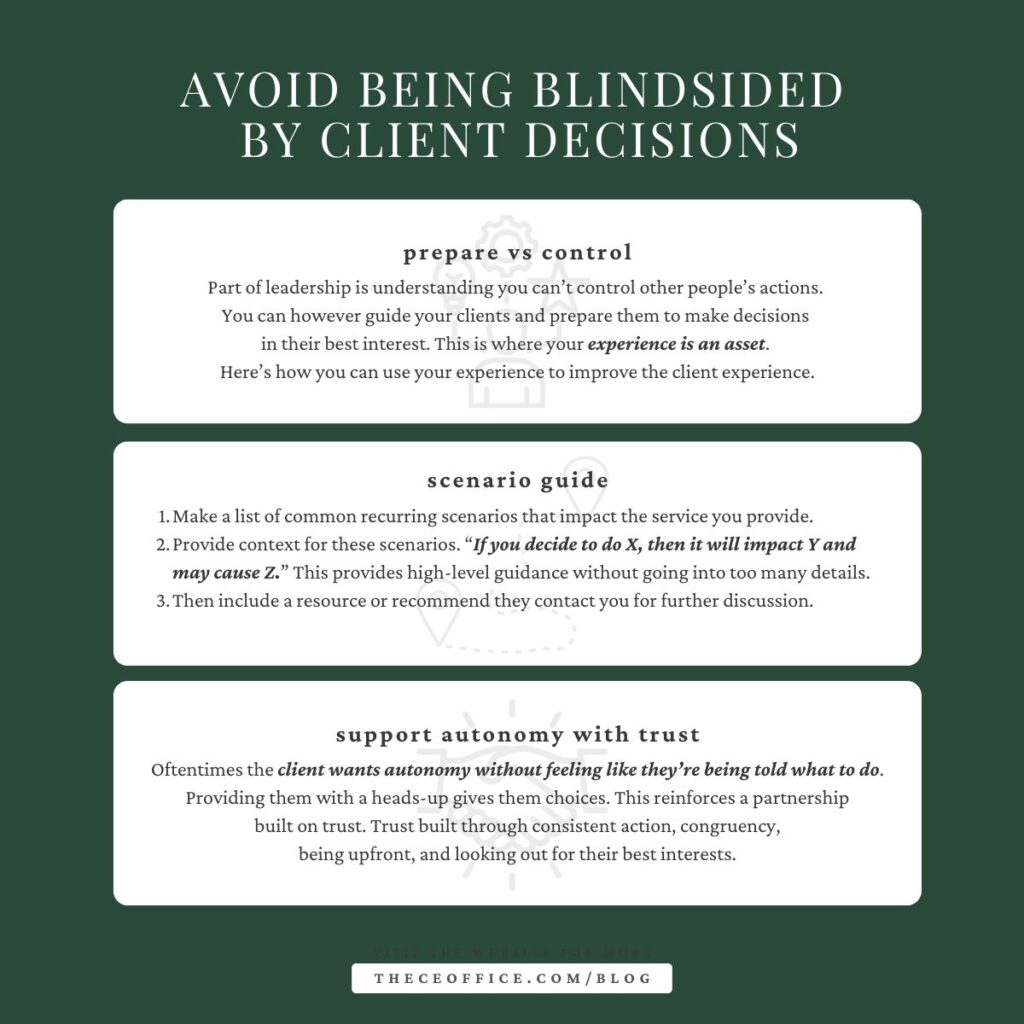How many clients have made decisions impacting your work without looping you in? It happens often because a client doesn’t know the impact and you’re not in the room to guide them. Finding out after the fact can be frustrating because it feels like you’re responsible for redirecting or damage control.

Part of leadership is understanding you can’t control other people’s actions. You can however guide your clients and prepare them to make decisions in their best interest. This is where your experience is an asset. Here’s how you can use your experience to improve the client experience.
- Make a list of common recurring scenarios that impact the service you provide.
- Provide context for these scenarios. “If you decide to do X, then it will impact Y and may cause Z.” This provides high-level guidance without going into too many details.
- Then include a resource or recommend they contact you for further discussion.
As a leadership coach, common recurring scenarios include hiring, promotions, compensation changes, terminations (voluntary/involuntary), performance reviews, etc. I don’t make the decisions, however, I can guide a client on how to prepare, what to consider, and what risks to avoid.
When I worked with policyholders, a common recurring scenario was the denial of claims for conditions treated within the first six months of the policy. To reduce surprise and anger, I told them about the waiting period at the beginning of each call.
When I worked with new home buyers, common recurring scenarios included large purchases, new credit lines, etc. It was in the client’s best of interest to educate them on what could prevent closing on their new home.
Oftentimes the client wants autonomy without feeling like they’re being told what to do. Providing them with a heads-up gives them choices. This reinforces a partnership built on trust. Trust built through consistent action, congruency, being upfront, and looking out for their best interests.
